Toxic Shame in Clinical Practice: Help Clients Release Shame, Get Unstuck and Improve Treatment Outcomes – Patti Ashley
Original price was: $199.99.$55.00Current price is: $55.00.
Toxic Shame in Clinical Practice: Help Clients Release Shame, Get Unstuck and Improve Treatment Outcomes – Patti Ashley Download. Dr. Ashley has heard othe…
Salepage link: At HERE. Archive:
Clinicians often report feeling “stuck” and unsure of the reasons why clinical strategies aren’t working. In this recording shame expert, Patti Ashley, Ph.D., LPC, will help enhance your clinical skills using neurobiological-informed and relational-informed strategies for identifying and treating toxic shame.
Toxic shame is like an infectious disease that lies untreated due to symptoms being difficult to recognize or misdiagnosed. Learning how to recognize and treat toxic shame requires you to be vulnerable and courageous in the therapy session.
Recognizing the signs of toxic shame in the assessment and treatment process can be difficult. Here are some examples of client behaviors to watch for that could indicate shame:
- Frequently cancels sessions
- Terminates treatment early
- Deflects and projects onto others
- Narcissistic self-inflation
- Perfectionism
- Minimization
- Anger, rage and contempt
- and more
This recording will take you back to the origins of shame and help you identify the non-verbal unspoken and unseen aspects in clinical work. Understanding how shame can undermine the therapeutic alliance and using somatic strategies to deepen an authentic relationship with the client are the keys to working with toxic shame in clinical practice.
Dr. Ashley has heard other clinicians who have taken this workshop say they experienced a “sigh of relief.” This is a recording you don’t want to miss!
- Summarize the nature of toxic shame as it relates to the therapeutic process.
- Identify how the different attachment styles play a role in how client’s shame is formed.
- Discover how toxic shame develops as a core identity and how it can be a roadblock in clinical treatment.
- Correlate how toxic shame and trauma function similarly to the nervous system and how that relates to clinical treatment.
- Utilize clinical strategies to help heal shame and get clients unstuck in the therapeutic process.
- Develop skills to help clients regulate shame triggers both in-session and everyday living.
PART ONE: HOW SHAME SHOWS UP IN TREATMENT
Toxic Shame
Research & Definitions
- Ruptures in interpersonal relationships create a shame-based identity
- Shame and trauma function similarly in the nervous system
- Subconscious shame effects of poisonous parenting
- Attachment theories as they relate to shame
- D.W. Winnicott’s true self/false self
- Shame in family, culture and other systems
- Limitations of the research
Signs of Toxic Shame:
What to Watch for in Assessment and Beyond
- Individual Therapy – the client who:
- Talks the whole session
- Frequently cancels sessions
- Feels bad when progress seems to have eluded
- Terminates treatment early
- Deflects and projects onto others
- Relapses and does not return
- Minimizes problems
- Excessively intellectualizes and analyzes treatment
- Couples/Family Therapy
- The attack/defend patter
- Anger, rage and contempt
- Judgment of self and others
- Grandiosity, narcissism and self-inflation
- People pleasing and codependency
- Avoidance
- Problems with intimacy
- Group Therapy:
- Cross-talk
- Intellectualizing
- Silence
- Judgment
- Conflict
When the Therapist is Part of the Problem
Rigid Treatment Models May Increase Shame and Decrease Positive Outcomes
- Shame can be activated when therapist appears to be the “expert”
- Some strategies hinder treatment outcomes
- Strategies that may create barriers to creativity and relational presence
- Impact of mirror neurons and epigenetics
- How naming “shame” can be shaming
- Unconsciously enacting shaming parent
- Treating client as appointment or diagnosis
- What to do when your shame is triggered in-session
PART TWO: TREATING THE TOXIC SHAME
Effectively Treat Toxic Shame
Implications for Treatment to Move Forward with Clients
- Right and left brain integration
- Bottom-up versus top-down treatment approaches
- Modeling, engaging and sustaining self-compassion
- Repair the interpersonal bridge to self and others
- Courage and vulnerability in right-brain regulation
- Sustaining empathy in parallel process
- Transference and counter-transference in treatment
Therapeutic Strategies:
Putting It All to Practice
- Build a Safe Therapeutic Holding Environment
- Establish safety and trust
- Set a stage for treatment
- Strong foundation for therapeutic work
- Build a Solid Relationship
- Therapeutic empathy as the antidote for shame
- Connect and establish equal power
- Mindfulness and compassion
- Bridge the Head and Heart
- Psycho-education to demystify shame
- ”I” statements to identify shame-based feelings
- Going beyond cognitive therapy models
- Witness and guide clients through deeper layers
- Return shame to its origin
- Somatic strategies
- Re-wiring new neural pathways
- Experiential Tools and Techniques
- Creative arts, writing and movement activities
- Mindfulness and meditation
- Archetypes, story-telling and mythology
- Music and sound healing
- Journaling and letter-writing
- Working with Secrets
- Patience and compassion
- Deeper shame
- Tolerance and non-judgmental witnessing
- Creativity
- Every client is unique
- How therapy is like art
- Goodness of fit
- Research limitations and potential treatment risks
Here's an overview of the prominent keywords and a list of famous authors:
Business and Sales: Explore business strategies, sales skills, entrepreneurship, and brand-building from authors like Joe Wicks, Jillian Michaels, and Tony Horton.
Sports and Fitness: Enhance athleticism, improve health and fitness with guidance from experts like Shaun T, Kayla Itsines, and Yoga with Adriene.
Personal Development: Develop communication skills, time management, creative thinking, and enhance self-awareness from authors like Gretchen Rubin, Simon Sinek, and Marie Kondo.
Technology and Coding: Learn about artificial intelligence, data analytics, programming, and blockchain technology from thought leaders like Neil deGrasse Tyson, Amy Cuddy, and Malcolm Gladwell.
Lifestyle and Wellness: Discover courses on holistic health, yoga, and healthy living from authors like Elizabeth Gilbert, Bill Nye, and Tracy Anderson.
Art and Creativity: Explore the world of art, creativity, and painting with guidance from renowned artists like Bob Ross and others.
All the courses on WSOlib are led by top authors and experts in their respective fields. Rest assured that the knowledge and skills you acquire are reliable and highly applicable.
Specification: Toxic Shame in Clinical Practice: Help Clients Release Shame, Get Unstuck and Improve Treatment Outcomes – Patti Ashley
|
User Reviews
Only logged in customers who have purchased this product may leave a review.

Original price was: $199.99.$55.00Current price is: $55.00.

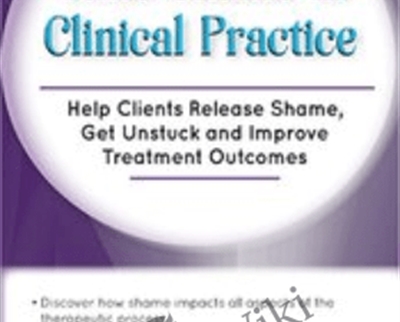






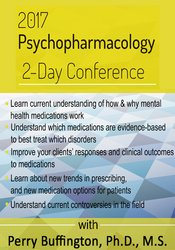
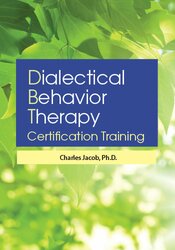
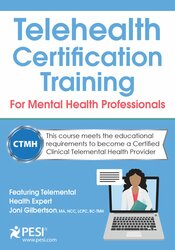
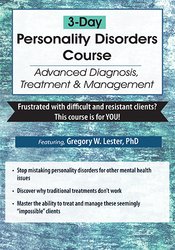
There are no reviews yet.